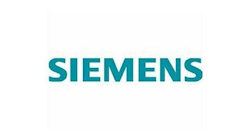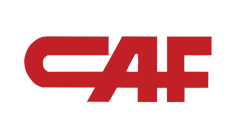CA: Coalition Hosts Webinar and Launches Website to Provide Resources for Manufacturers, Rail Experts, and Advocates
On April 7, representatives of the world’s largest railcar manufacturing companies learned about best-practices in American workforce development, diversity, and outreach to disadvantaged workers via an informational webinar hosted by the Jobs to Move America coalition.
The companies are preparing to submit proposals to Amtrak and the California High Speed Rail Authority by May 17, competing for a multibillion dollar contract to manufacture 43 state-of-the-art high speed “train sets” to operate between Boston and Washington, D.C., and between San Francisco and Los Angeles. To support manufacturers’ efforts to recruit and develop a skilled American workforce to build America’s new high speed trains, the Jobs to Move America coalition — a national coalition uniting more than 30 community, civil rights, faith-based, philanthropic, labor, academic and environmental groups — launched its new website and hosted the webinar on Monday.
“We want to inspire the companies bidding to build high-speed trains for Amtrak and California – some of the largest manufacturing companies in the world – to create thousands of U.S. jobs and exciting opportunities for disadvantaged Americans,” said Madeline Janis, director of the Jobs to Move America campaign. “It’s vital to put billions of our taxpayer dollars to good use, reviving America’s manufacturing sector and reducing devastatingly high unemployment.”
The April 7 webinar featured real-world snapshots of workforce development programs that have created the most innovative and successful efforts to get more women, people of color and disadvantaged people into manufacturing jobs. Roll-up-your-sleeve experts from top non-profit, community college, and union programs in Chicago, Wisconsin and Los Angeles explained models for recruiting, hiring and training disadvantaged workers into skilled railcar manufacturing jobs.
The Jobs to Move America coalition also launched its new public website, featuring a workforce development resource bank, and a range of other information and tools to make America’s transit dollars go the distance. The glossy, engaging website also includes a pledge asking transit officials to use dollars wisely, personal stories of transportation manufacturing workers, and testimonials from prominent leaders of the Jobs to Move America coalition.
Both the website and webinar were tailored by the Jobs to Move America coalition to help manufacturing companies meet the requirements of Amtrak’s Request for Proposals (RFP) for its new high-speed trains. Issued Jan. 24, Amtrak’s RFP asked bidding manufacturers to divulge comprehensive information about their plans to create American jobs, locate manufacturing facilities in the United States, recruit disadvantaged workers such as veterans, and invest in workforce development, in connection with the contract.
To help inform bidding proposals to Amtrak, Dan Swinney, executive director of Manufacturing Renaissance, shared success stories of Chicago area training programs that imbue manufacturing workers with standardized skills, saying, “let’s make our programs a stepping stone not just to a job, but to a career. Successful education and training programs linked to manufacturing must align with national skill standards and formal industry credentials that are portable. Everyone benefits -- companies, employees and our education and training system.”
The Amtrak RFP also asks bidding manufacturers to detail their relationships with workforce development and training organizations. To this end, webinar presenters Leticia Barajas, vice president for academic affairs and workforce development of Los Angeles Trade Technical College (LATTC), Earl Buford, president and CEO of the Wisconsin Regional Training Partnership and Building Industry Group Skilled Trades Employment Program (WRTP/BIG STEP), and José Osuna, employment services director of Homeboy Ind., shared their expert perspectives.
“As companies look to grow globally competitive advanced rail and component manufacturing capabilities, their commitment to workforce training and diversity will be critical,” Zoe Lipman, senior policy advisor for the BlueGreen Alliance. “Today on the webinar, we heard examples of how companies can stand above the rest through partnerships with community, labor, and educational organizations. We hope those competing to manufacture America’s high-speed trains will tap into Jobs to Move America’s resources to build these essential relationships and grow the 21st century manufacturing workforce in America.”
Many of the railcar manufacturing companies expected to bid for the high-speed trains contract have existing "final assembly" facilities or factories in the United States; such as Siemens Industries in Sacramento, Calif., Bombardier in Plattsburgh, N.Y. and West Mifflin, Penn., Nippon Sharyo in Rochelle, Ill., CAF-USA in Elmira, N.Y., and Kawasaki in Lincoln, Neb., and Yonkers, N.Y.
After the May 17 deadline for proposals, Amtrak will evaluate and score each bidder’s American jobs plans in deciding which company to award, and eventually incorporate these plans into its contract with the winning bidder. University of Massachusetts, Amherst economists estimate that Amtrak’s approach could incentivize manufacturing companies to create nearly 28,000 American jobs.
“The Jobs to Move America coalition hopes our webinar will spark the beginning of a national resource center for public transit agencies and rolling stock manufacturers to connect with and develop workforce development programs, as we all work to create more good manufacturing jobs and more opportunity for people struggling to lift their families out of poverty,” Janis said.
The webinar was offered free of charge for railcar manufacturing company staff and executives, government officials, and interested experts in the field. More than 60 stakeholders participated.





